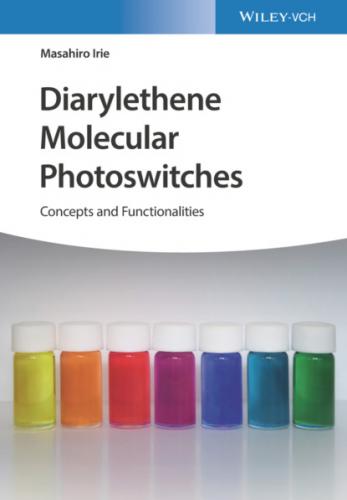Table 2.2 Aromatic stabilization energy differences.
| Group | Energy (kJ/mol) |
|---|---|
| Phenyl | 116 |
| Pyrrol | 58 |
| Furyl | 38 |
| Thienyl | 20 |
The theoretical prediction was confirmed by the synthesis of diarylethene derivatives with various types of aryl groups as shown in Figure 2.4. When the aryl groups are thiophene, benzothiophene, thiazole, or oxazole rings, which have low aromatic stabilization energy, the closed‐ring isomers are stable (more than 12 hours at 80 °C). On the other hand, photogenerated closed‐ring isomers of diarylethenes with indole rings, which have intermediate aromatic stabilization energy, undergo thermally reversible photoswitching (half‐life time at 80 °C of 16c: 2.5 hours). The closed‐ring isomers of diarylethene derivatives with phenyl rings readily returned back to open‐ring isomers (half‐life time at 20 °C of 18c: 1.5 minutes).
Figure 2.4 Thermal stability of diarylethene derivatives. Any appreciable change of the absorption intensity of the closed‐ring isomer was not observed in the thermally stable derivatives for more than 12 hours at 80 °C.
From the above theoretical and experimental results, the guiding principle for the synthesis of thermally irreversible diarylethenes is defined as follows.
The thermally irreversible photoswitching diarylethenes can be prepared by employing aryl groups with low aromatic stabilization energy.
2.2 Theoretical Study
The well‐studied photoinduced cyclization and cycloreversion reactions between 1,3,5‐hexatriene (HT) and cyclohexadiene (CHD) provide a useful framework for understanding the basic reaction mechanism of diarylethenes. As the first step, potential energy surfaces of a model diarylethene, 1,2‐bis(cyclopenta‐1,3‐dien‐2‐yl)‐ethene, were calculated using a complete active space self‐consistent field (CASSCF) method [3]. Figure 2.5 shows S0 and S1 potential energy surfaces along the reaction coordinate. On both S0 and S1 surfaces there exist two minima, a closed‐ring isomer (CHD and CHD*) and an open‐ring isomer (HT and HT*). Transition structures (TS0 and TS1) were also characterized on each potential energy surface. Several conical intersection minima (indicated by crosses) exist on both closed‐ and open‐ring sides of the potential surface in addition to CI3. CI3 is the most important conical intersection, because it is the only one that provides a pathway toward both open and closed minima on the ground state. At the conical intersection geometry, one has a triangular arrangement between three unpaired electrons belonging to carbon atoms in the two 5‐membered rings. These three electrons are weakly coupled π‐electrons, and a fourth (belonging to a three‐electron allyl fragment) is an uncoupled spectator. It is worth noting that the TS1 barrier does not exist in the CHD/HT system. The barrier is probably due to steric constraint from the sigma‐bond framework.
Figure 2.5 Potential energy surfaces of a model diarylethene.
Source: Reprinted with permission from Ref. [3]. Copyright 2003 American Chemical Society.
Figure 2.5 shows the potential energy surfaces along the reaction coordinate of the hydrocarbon model system. A more realistic model is dithienylethene. The potential energy surfaces of 1,2‐di(3‐thienyl)ethene (12) were calculated as a function of the distance between two reactive carbon atoms, R(C—C), using the CASSCF method, as shown in Figure 2.6 [4]. To understand the reaction mechanism, a molecular mechanics‐valence bond (MMVB) computation of the dynamics was also carried out. Three‐dimensional representation of the structures of S0 and S1 potential energy surfaces and two‐dimensional simplified one of the structures are shown in Figures 2.7 and 2.8, respectively [5]. These figures also outline minimum energy paths corresponding to ring‐closing and ring‐opening reactions of the dithienylethene.
Figure 2.6 Potential energy surfaces of ground (1A) and two excited (2A and 1B) states of 12 as a function of the distance between two reactive carbon atoms.
Source: Reprinted with permission from Ref. [4]. Copyright 2004 American Chemical Society.
Figure 2.7 Schematic representation of the structures of S0 (orange) and S1 (green) potential energy surfaces corresponding to the photoisomerization between open‐ and closed‐ring isomers of a diarylethene. Reaction coordinate is the distance between the two reactive carbon atoms.
Source: Adapted from Ref. [5] with permission from the PCCP Owner Societies.
Figure 2.8 Outline of two reaction paths corresponding to ring‐opening and ring‐closing reactions of a diarylethene. The letters in parentheses, c and o, represent closed‐ and open‐ring isomer structures, respectively.
Source: Reprinted with permission from Ref. [6]. Copyright 2014 American Chemical Society.
Upon irradiation with UV light, the open‐ring isomer is excited to the allowed Frank–Condon
